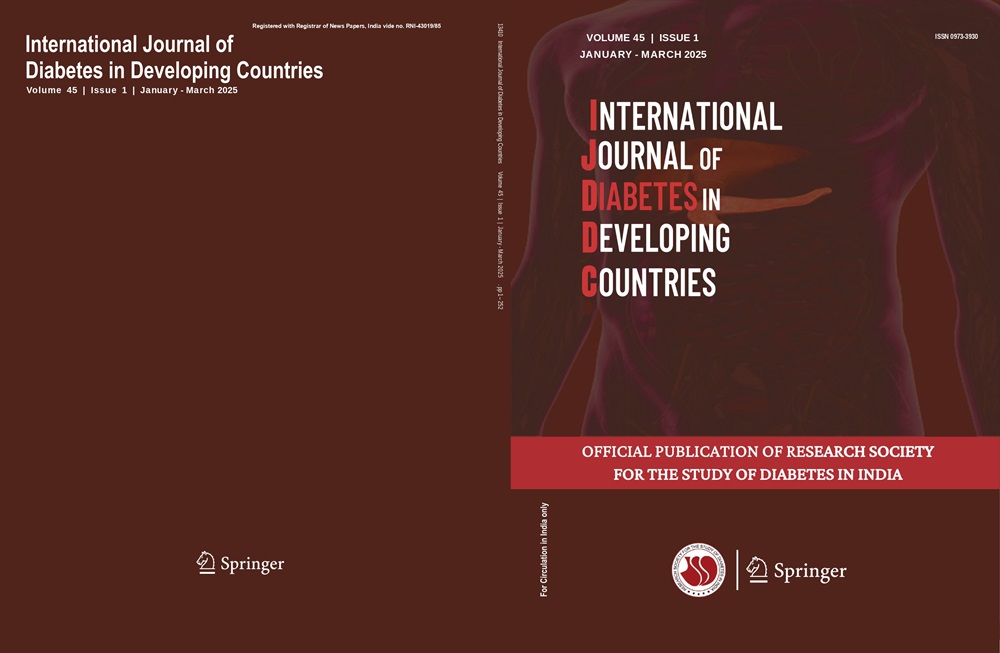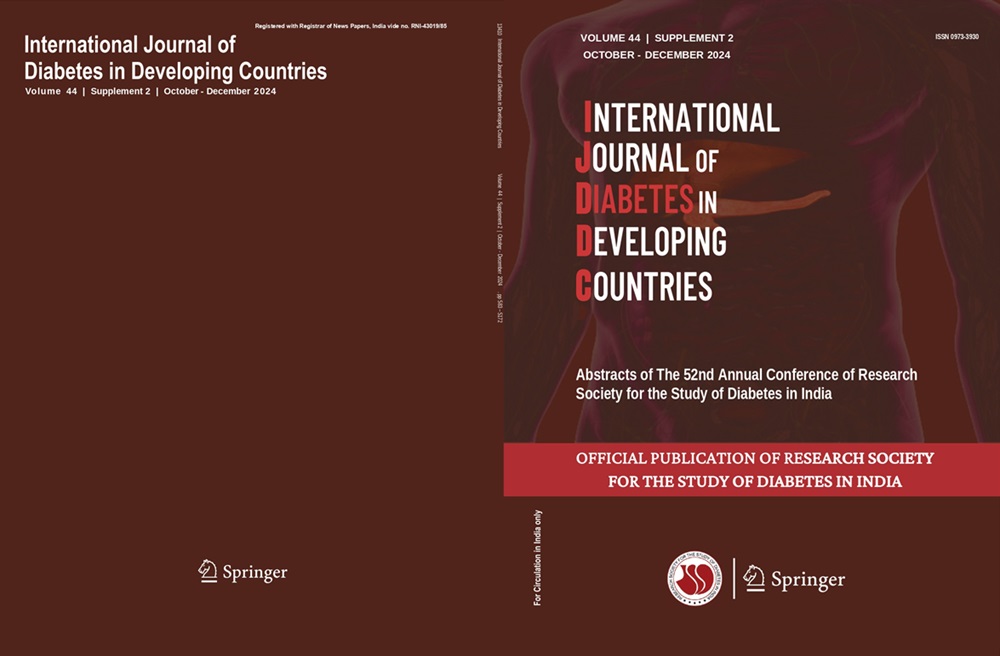Joyita Banerjee, Yogita Dhas, Swagata Roy, Neetu Mishra
Keywords
Chronic infl ammation • Glycemia • miR-146a • Middle-aged • T2DM duration
Abstract
Background Early onset of type 2 diabetes mellitus (T2DM) may increase the risk of accelerated diabetes complications and age-related pathologies among relatively young Indians. Inflamm-miR-146a exerts a pivotal role in ageing and diabetes-associated complexities. Hence, we aimed to determine the expression of circulatory miR-146a in the plasma samples of the middle-aged (31–50 years) Indians with T2DM.
Methods The serological markers of inflammation, such as high-sensitivity C-reactive protein (hs-CRP), interleukin-6 (IL-6), tumor necrosis factor-α (TNF-α), interleukin-1β (IL-1β), and monocyte-chemoattractant protein-1 (MCP-1) were measured in T2DM patients (n = 30) and healthy controls (n = 30). MiR-146a expression was determined by quantitative PCR (qPCR).
Results Among the serological inflammatory markers, hs-CRP and IL-6 differed significantly between T2DM patients and controls. MiR-146a was found to upregulate significantly (p = 0.041) in T2DM patients than controls. Overexpression of plasma miR-146a was also observed with poor glycemia and with the longer duration of T2DM.
Conclusion Significant upregulation of plasma miR-146a indicated the increased risk of age-related pathologies in the middle-aged T2DM patients, which might allow taking effective therapeutic or lifestyle modification measures at an early stage.




